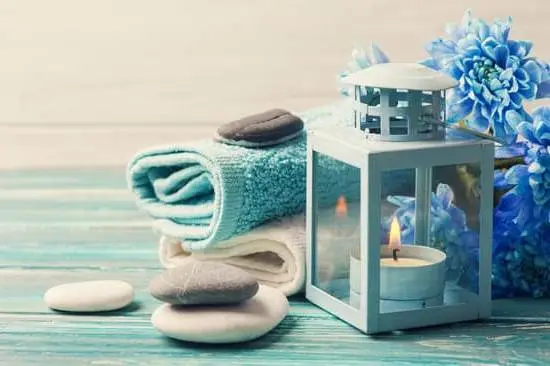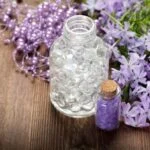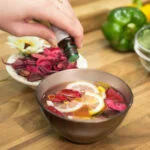Aromatherapy massage is a gentle, soothing form of massage that incorporates the use of essential oils to promote relaxation, relieve stress, and enhance well-being. In this article, we will explore the basics of aromatherapy massage, including understanding the benefits of essential oils, creating the perfect ambiance for the massage, and learning specific techniques to target different areas of the body.
Whether you are looking to learn how to perform aromatherapy massage for yourself or others, this comprehensive guide will provide you with all the necessary information to get started.
Aromatherapy massage harnesses the healing properties of essential oils derived from plants and flowers to promote physical and emotional well-being. By incorporating these aromatic oils into a relaxing massage session, individuals can experience a holistic approach to health and wellness. This article will delve into the various essential oils commonly used in aromatherapy massage and their specific benefits, providing readers with a comprehensive understanding of how these natural remedies can positively impact their lives.
Creating the perfect ambiance is essential for maximizing the benefits of aromatherapy massage. From choosing the right lighting and music to utilizing aromatherapy diffusers to fill the room with calming scents, setting the mood plays a crucial role in enhancing the overall experience.
Additionally, understanding how to prepare for an aromatherapy massage by gathering essential tools and supplies is equally important in ensuring a successful and enjoyable session. Throughout this article, we will provide practical tips on how to create an ideal atmosphere for indulging in this therapeutic practice.
Understanding the Basics of Aromatherapy Oils and Their Benefits
Aromatherapy oils are an essential aspect of aromatherapy massage, as they are the key component that provides both the physical and mental benefits. These essential oils are derived from various plants and have unique properties that can promote relaxation, reduce stress, alleviate pain, and improve overall well-being. Each essential oil offers different benefits, so it’s crucial to understand their basics before incorporating them into a massage.
One of the most popular aromatherapy oils is lavender oil, known for its calming and soothing properties. Peppermint oil is another widely used option due to its invigorating and refreshing effects. Meanwhile, eucalyptus oil is often chosen for its ability to relieve respiratory issues. It’s important to note that these essential oils should be diluted with a carrier oil (such as jojoba or almond oil) before applying them directly to the skin during massage.
When selecting aromatherapy oils for a massage, it’s essential to consider the recipient’s preferences and any existing health conditions or allergies they may have. Some individuals may prefer certain scents over others, while others may benefit more from specific properties of certain oils. It’s also recommended to do a patch test on the skin prior to the massage to ensure there are no adverse reactions.
| Essential Oil | Benefits |
|---|---|
| Lavender oil | Calming, soothing, promotes relaxation |
| Peppermint oil | Invigorating, refreshing, relieves headaches |
| Eucalyptus oil | Relieves respiratory issues, clears sinuses |
Understanding the basics of aromatherapy oils and their benefits is crucial for performing an effective aromatherapy massage. By incorporating the right combination of essential oils tailored to the recipient’s needs, it’s possible to enhance both the physical and emotional aspects of the massage experience.
Setting the Mood
Aromatherapy massage is not just about the physical manipulation of muscles and tissues, but it also involves creating the right ambiance to enhance relaxation and healing. Setting the mood is an essential part of the overall experience, as it can greatly influence the effectiveness of the massage.
To create the perfect ambiance for aromatherapy massage, it is important to consider using essential oils with calming and soothing properties. Scents like lavender, chamomile, and sandalwood are known for their ability to promote relaxation and reduce stress. You can use these oils in a diffuser or mix them with a carrier oil for use during the massage.
Additionally, you should pay attention to lighting and music when setting the mood for aromatherapy massage. Soft, warm lighting can help create a tranquil atmosphere, while gentle instrumental music or nature sounds can further enhance relaxation. It’s important to ensure that the environment is free from distractions and noise in order to fully benefit from the aromatherapy massage experience.
Furthermore, incorporating elements like soft blankets, comfortable cushions, and warm towels can also contribute to setting the right ambiance for aromatherapy massage. Creating a cozy and inviting space will help your client feel more at ease and allow them to fully immerse themselves in the healing benefits of both touch and scent during their session.
| Aspect | Description |
|---|---|
| Essential Oils | Lavender, chamomile, sandalwood – calming scents |
| Lighting/ Music | Soft/warm lighting; instrumental music or nature sounds |
| Ambiance Elements | Soft blankets, comfortable cushions, warm towels |
Preparing for the Massage
When it comes to performing an aromatherapy massage, preparation is key. Gathering the essential tools and supplies beforehand will ensure that the massage goes smoothly and that the recipient has a relaxing experience. Here are some important items to have on hand before you begin your aromatherapy massage.
Aromatherapy Oils
The most important tool for an aromatherapy massage is, of course, the essential oils themselves. Choose high-quality oils that are specifically designed for use in massage. Popular choices include lavender for relaxation, peppermint for pain relief, and eucalyptus for respiratory support. Be sure to have a variety of oils on hand to cater to different needs and preferences.
Massage Table or Comfortable Surface
You’ll need a comfortable and stable surface for your recipient to lay on during the massage. A professional massage table is ideal, but a bed or even the floor can work if outfitted with some extra padding. Make sure the area is clean and clutter-free to create a peaceful environment for the recipient.
Towels and Blankets
Having a stack of clean towels and blankets at hand will allow you to cover up areas of the body that are not being massaged, keeping your recipient warm and comfortable. Additionally, using towels as drapes can help maintain modesty while ensuring that only the area being worked on is exposed.
Incorporating these essential tools and supplies into your preparations will set you up for success when performing an aromatherapy massage. By having everything you need ready ahead of time, you can focus fully on providing a rejuvenating experience for your recipient.
Techniques for Aromatherapy Massage
When it comes to performing an aromatherapy massage, understanding the different techniques is key to providing a soothing and therapeutic experience for the recipient. From gentle effleurage to kneading movements like petrissage, each technique serves a specific purpose in promoting relaxation and releasing tension in the body.
Effleurage
Effleurage is a gentle stroking movement that is used at the beginning and end of the massage session. This technique helps to warm up the muscles, improve circulation, and relax the body. Using long, smooth strokes with light pressure, effleurage sets the tone for the rest of the massage and helps the recipient ease into a state of deep relaxation.
Petrissage
Petrissage involves kneading, squeezing, and wringing movements that work deeper into the muscle tissue to release tension and promote flexibility. This technique is effective in targeting specific areas of tightness or soreness in the body, such as the shoulders, back, and legs. By applying firm pressure and using a rhythmic motion, petrissage helps to increase blood flow and alleviate muscle knots.
Finding Balance
Incorporating a combination of effleurage and petrissage throughout the aromatherapy massage allows for a balanced approach to providing both relaxation and targeted relief. Alternating between these two techniques can create a seamless flow of movement that caters to the recipient’s individual needs while enhancing their overall sense of well-being.
By mastering these essential aromatherapy massage techniques, you can effectively deliver a deeply therapeutic experience that promotes relaxation, relieves tension, and rejuvenates both body and mind.
Targeting Specific Areas
In aromatherapy massage, essential oils are used in combination with massage techniques to promote relaxation, reduce pain, and alleviate the symptoms of various common ailments. Here’s a guide on how to perform aromatherapy massage to address specific areas of concern:
- Headaches: To alleviate headaches with aromatherapy massage, use peppermint or eucalyptus oil. Mix a few drops with a carrier oil such as coconut or almond oil and gently massage the temples and back of the neck in a circular motion.
- Muscle pain: For sore or achy muscles, consider using lavender or chamomile oil. These oils have calming properties that can help to relax tense muscles. Apply the diluted mixture to the affected area and use kneading and petrissage techniques to work out any knots.
- Stress and anxiety: Aromatherapy massage can be particularly effective in reducing stress and promoting relaxation. Consider using bergamot or ylang-ylang oil for their calming effects. Focus on long, gliding strokes (effleurage) to soothe the body and mind.
By targeting specific areas with the appropriate essential oils and massage techniques, aromatherapy massage can effectively provide relief from common ailments. It is important to always dilute essential oils with a carrier oil before applying them to the skin, and to perform a patch test beforehand to check for any potential allergic reactions.
With proper knowledge of aromatherapy oils and their benefits, as well as understanding how to perform different massage techniques, you can make the most of aromatherapy massage for your overall well-being.
Tips for Enhancing the Experience
Aromatherapy massage can be a truly holistic experience, integrating the benefits of essential oils and the therapeutic touch of massage. To enhance this experience further, it’s important to pay attention to the ambiance during the session. Here are some tips for enhancing the experience through music, lighting, and aromatherapy diffusers:
- Choose calming and soothing music: Music can have a profound impact on the overall mood and relaxation of the individual receiving the massage. Opt for gentle instrumental music or nature sounds to create a serene atmosphere.
- Adjust lighting for relaxation: Soft, warm lighting is ideal for creating a peaceful environment during an aromatherapy massage. Consider using candles, dimmers, or Himalayan salt lamps to achieve the perfect level of ambient light.
- Utilize aromatherapy diffusers: Aromatherapy diffusers can disperse essential oils into the air, enhancing the therapeutic benefits of the massage. Certain essential oils, such as lavender or chamomile, can promote relaxation and stress reduction.
By incorporating these elements into your aromatherapy massage practice, you can elevate the overall experience for both yourself as the practitioner and your client. The combination of soothing music, soft lighting, and aromatic scents can contribute to a deeper sense of relaxation and wellness during the massage session.
In addition to music, lighting, and aromatherapy diffusers consider incorporating other elements such as comfortable bedding with fresh linens and supportive pillows for ultimate comfort during the treatment. Remember that every small detail contributes to creating a deeply calming and rejuvenating experience for anyone receiving an aromatherapy massage.
From choosing appropriate background tunes to setting up soft lightings and diffusing calming scents in your space – all these little enhancements would surely take your aroma therapy sessions several notches higher in terms of client satisfaction.
Aftercare
After experiencing the relaxing and rejuvenating effects of an aromatherapy massage, it’s essential to continue caring for your body and mind. Here are some aftercare tips to help you maintain the benefits of the massage and prolong the feelings of relaxation:
1. Hydrate: Drinking plenty of water after an aromatherapy massage is crucial. This helps flush out toxins released during the massage and prevents dehydration. Hydration also helps in maximizing the benefits of the essential oils used during the massage.
2. Rest and Relax: After an aromatherapy massage, allow yourself some time to rest and relax. Avoid engaging in strenuous activities immediately after the massage to fully embrace the calming effects of the treatment.
3. Use Aromatherapy Products at Home: To extend the benefits of your aromatherapy massage, consider using related products at home, such as scented candles, essential oil diffusers, or aroma-infused bath salts. These products can help create a soothing atmosphere and enhance relaxation even after your session is over.
Remember that incorporating these aftercare practices into your routine can help you continue reaping the benefits of how to perform aromatherapy massage long after leaving the spa or treatment room. By taking care of your body and mind post-aromatherapy massage, you can maintain a sense of peace and well-being.
Conclusion
In conclusion, aromatherapy massage offers a holistic approach to relaxation, rejuvenation, and healing. Through the therapeutic use of essential oils and various massage techniques, it has been proven to have numerous benefits for both the body and mind. Whether it’s reducing stress and anxiety, alleviating muscle tension, or promoting better sleep, aromatherapy massage can be a powerful tool in enhancing overall well-being.
Learning how to perform aromatherapy massage is not only about mastering techniques and understanding the properties of different essential oils but also creating the perfect ambiance for a truly immersive experience. By incorporating soft lighting, calming music, and the use of aromatherapy diffusers, you can elevate the sensory journey and provide added comfort to your clients or yourself.
As we continue to embrace the healing power of aromatherapy massage, it’s important to remember that aftercare plays a crucial role in maximizing its benefits. Encouraging clients to stay hydrated, rest, and engage in mindfulness practices post-massage can help prolong the effects of relaxation and promote overall wellness. By incorporating these tips into your practice or personal routine, you can fully appreciate the transformative impact of aromatherapy massage on both your body and mind.

Are you looking for a natural way to improve your health and wellbeing?
If so, aromatherapy may be the answer for you.





